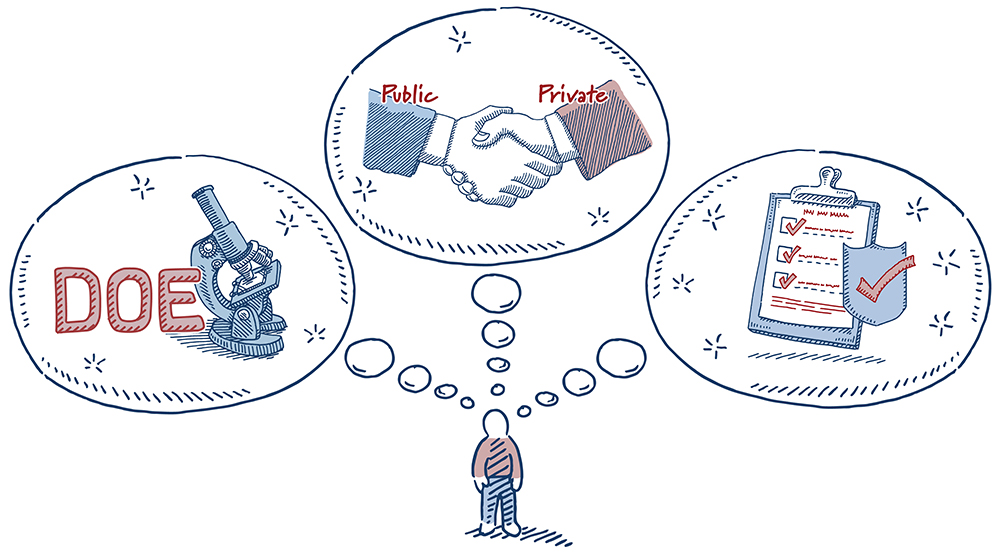Posted on April 19, 2023 by Savita Bowman and 174
To reduce emissions, let’s return manufacturing to the U.S., where environmental standards are tougher than in places like China. U.S. industrial manufacturing is nearly 28% cleaner than our competitors, like China. In fact, the U.S. has some of the cleanest technologies and industrial processes in the world, and we continue to lead the world in innovation. But, today much of the world is relying on products including cement and concrete produced in China. Returning manufacturing capabilities back home will reduce dependence on higher emissions producers, advance domestic innovation that reduces raw material and resource needs, and provide clean and affordable solutions. This cascading effect will enhance the international export of U.S. innovations to bring down global emissions.
Cement and concrete are essential for products that are used in the daily lives of people across the world. They are used in everything from roads and highways to buildings and more. However, the cement and concrete industry is also seen as one of the most difficult to decarbonize sectors of our economy due to the carbon dioxide emissions released. By 2030, the industrial sector is poised to become the highest emitting sector in the U.S. economy, passing the energy and transportation sectors. For perspective, if cement emissions were equivalent to a country, it would be the third largest emitter in the world, accounting for about eight percent of the world’s total carbon emissions.
Innovations in cement and concrete productions are the answer for the U.S. to achieve emissions reductions within the industrial sector. The good news is that Congress has started to express significant interest in industrial decarbonization. Recently enacted legislation such as the bipartisan Investment in Infrastructure and Jobs Act (IIJA) of 2021 and the 2022 tax package provided over $6 billion to the Department of Energy (DOE) for industrial decarbonization demonstration programs within the Office of Clean Energy Demonstration for the Advanced Industrial Facilities Deployment Program.
Some innovators have noticed this opportunity and are already working to develop new, low-emissions cement technologies. California-based company Brimstone is making cement from carbon-free calcium silicate rock instead of carbon-heavy limestone, through carbon mineralization, — which makes their cement carbon-negative. Biomason, a company based in North Carolina, is also eliminating emissions from traditional cement by using biotechnology to grow “biocement,” an alternative to traditional cement.
Proper direction from Congress to effectively deploy over $6 billion in DOE funds is needed to ensure innovations with high-decarbonization and low-cost potential are prioritized. Here are three potential ways public policy can ensure Congressional funds are spent wisely.

Currently, many local construction codes follow traditional standards, which use specifications that originated decades ago when cement and concrete quality was not as robust as it is today. Due to advances in cement and concrete manufacturing, there’s more “stuff” in our mixtures than there needs to be. For example, the National Ready Mixed Concrete Association (NRMCA) noted that 85% of concrete specifications include unnecessary restrictions on supplementary cementitious materials (SCM). NRMCA also found other similar material requirements, which results in poorer concrete quality, undue emissions, and unnecessarily high costs.
However, there are alternatives to these traditional standards. According to the Department of Transportation (DOT), performance-based specifications are specifications that describe the desired levels of fundamental engineering properties that are predictors of performance. In other words, the fundamental engineering properties, such as how strong the material is, can be used to predict how the concrete will perform in real world conditions, such as in traffic or in different weather. However, performance-based standards aren’t yet widely adopted across states.
Adopting performance-based standards can help reduce energy use, water use, and emissions. They also send market signals to encourage investments in clean cement and concrete technologies, such as carbon capture, the use of alternative fuels and feedstocks like hydrogen, and innovative, emissions-free cement manufacturing like Biomason’s and Brimstone’s processes. Finally, updating to a performance-based standard will allow the deployment of new and efficient mixtures unlocking an untapped market for major concrete producers like Holcim and CEMEX, who have these modern cement and concrete mixtures ready to deploy.
Like baking a cake, you could use your grandmother’s secret recipe to impress all your guests (a performance-based standard) or store-bought cake mix just to get the job done (traditional standards).
Bringing American industry back without imposing fees and additional costs is necessary if we want to ensure an uninterrupted supply chain and decarbonization of the global concrete industry. Establishing clear RD&D efforts within DOE can prioritize public-private partnerships, and support the adoption of modernized construction codes. These first steps will allow America the opportunity to reemerge at the forefront of the industrial economy, and lead the world in industrial decarbonization.
